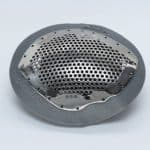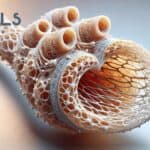
Nick Dechev received his Ph.D. in Mechanical Engineering from the University of Toronto, Canada, in 2004, and joined the University of Victoria in 2005. He is currently an Associate Professor in the Faculty of Engineering and is presently Director of the Biomedical Engineering Program. Dr. Dechev’s research program involves biomedical system design with application areas centered on advanced hand prosthesis and bio-sensor design. These areas include 3D printing of hand prosthesis, implantable sensor design for the acquisition of bio-signals, and wireless power transfer technology for implantable sensors. These projects aim at developing better methods for the control of advanced hand prosthesis. He is also the Executive Director of the Victoria Hand Project, a non-profit dedicated to providing hand prostheses to amputees in need in developing countries. Dr. Dechev will be a speaker at the #3DHEALS2020.
Jenny: When was the first encounter you had with 3D printing? What was that experience like?
Nick: First encounter was 16 years ago with a stereolithography system. It was a huge machine, and cost around half a million dollars! It made an impressive prototype part about the size of a cup made of polycarbonate, but it was expensive. The more recent encounter was with FDM (Fused Deposition Modelling) about 7 years ago in the laboratories at the University of Victoria. The FDM system really amazed me, since the machine was only around $6000, and even though the parts produced were very coarse (thick layers) and brittle, I saw the potential given the low cost.
Jenny: What inspired you to start your journey in 3D printing ?
Nick: The journey for the Victoria Hand Project started as a research project. That research project, in turn, was started by my personal motivation to help create technologies for people with health and disability issues.
Jenny: Who inspired you the most along this journey in 3D printing (bio-printing/bio-fabrication)? This can be a mentor, a patient, a celebrity, anyone basically. You can name more than one as well.
Nick: My inspiration comes from various people I work with, who push the edge of technological advancement, including many colleagues at the University of Victoria. As well, the incredibly talented and dedicated team of Range of Motion Project, headed by David Krupa, CPO, and Eric Neufeld, CPO.
Jenny: What motivates you the most for your work?
Nick: As a design engineer, I enjoy cross-mixing technologies, to enable/create new possibilities. Technologies all build upon each other, like a set of inter-linked pieces. Connecting these together, and sometimes creating new technology from scratch, is exciting and drives my work and research.
Jenny: What is/are the biggest obstacle(s) in your line of work? If you have conquered them, what were your solutions?
Nick: Finding enough talented and motivated people! Since Victoria Hand Project is a non-profit, this task is even more challenging. Monetary incentives are not the motivation for recruitment, which is a hurdle. Solutions for this are various. Finding people who will donate their time and experience may mean: alignment of mutual interests, providing knowledge, training, and experience to them, providing recognition of their efforts, or various other means.
Jenny: What do you think is (are) the biggest challenge(s) in 3D Printing/bio-printing? What do you think the potential solution(s) is (are)?
Nick: Materials, Materials, Materials! The robotics and machinery of 3D printers are well developed and are already phenomenally low cost. Its time for major advances in the materials used for 3D printing, to improve strength, durability, and other properties. Also, its time to move beyond just 3D prototyping, into limited-run (low batch) fabrication of end-use products. That’s exactly what the medical industry needs.
Jenny: If you are granted three wishes by a higher being, what would they be?
Nick:
a. A sustainable world, with food, water, and resources for everyone
b. World peace
c. A seat on a mission to Mars 🙂
Jenny: What advice would you give to a smart driven college student in the “real world”? What bad advice you heard should they ignore?
Nick:
a.Take many calculated risks early on in your career, when you have little to lose.
b.Share your ideas with others to get valuable feedback. There is way more to gain by getting early feedback on your idea, than worrying about someone stealing the idea.
Jenny: What were/was the best investment you made in 3D printing/bio-printing/bio-fabrication?
Nick: FDM printing technology. Its low-cost, durable, easily serviceable hardware, works under various conditions and produces field ready parts.
Jenny: What was/is the biggest risk you took in your career?
Nick: Branching into new areas of research where I previously have zero experience. This has led to some of my biggest successes.
Jenny: What do you enjoy in your spare time? What are you passionate about outside of your work/3d printing?
Nick: Technology design and creation. Its blend of my work and personal interests.
Jenny: What is your favorite quote? Why?
Nick: “Just do it” by Nike. With so many daily tasks, there are 100 reasons not to do something important that needs to be done. Find your priority and “just do it!”
Jenny: What does the word “3DHEALS” mean to you? =)
Nick: 3D printing enabling healthcare and medicine.




 May 18, 2020
May 18, 2020 






Comments